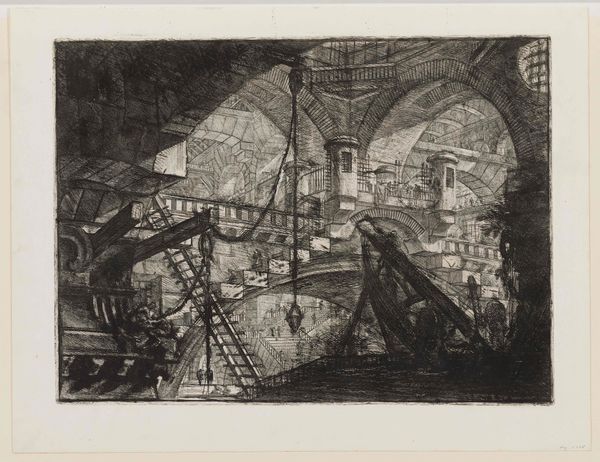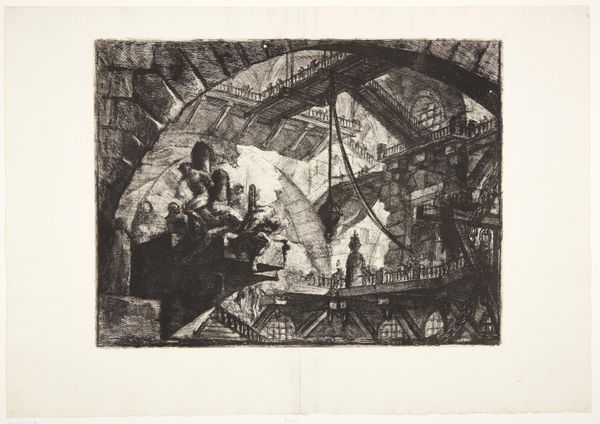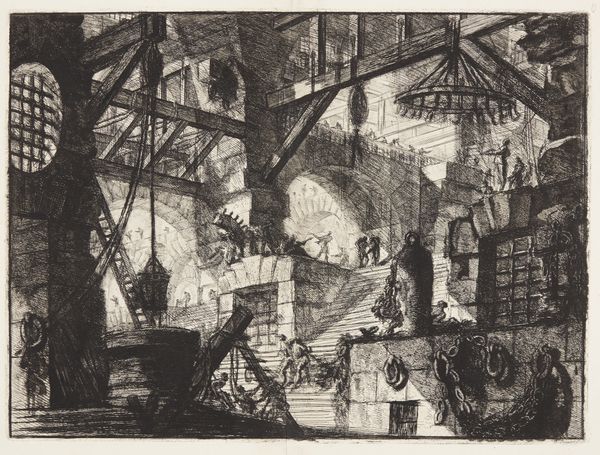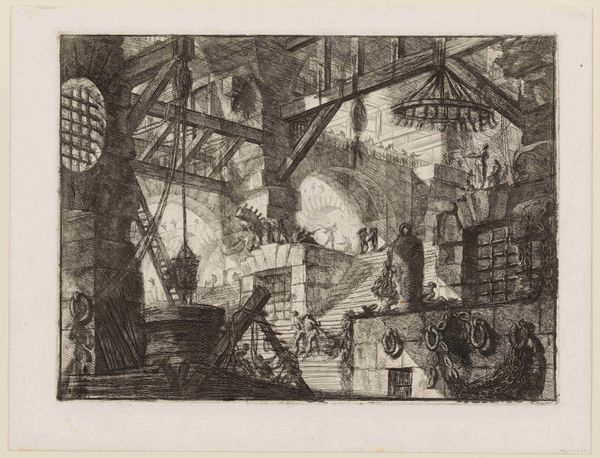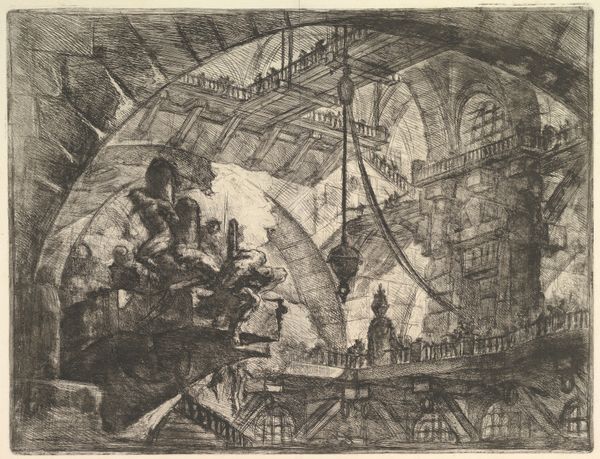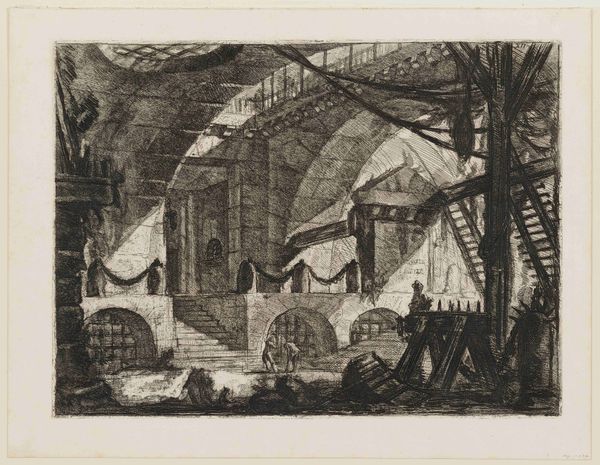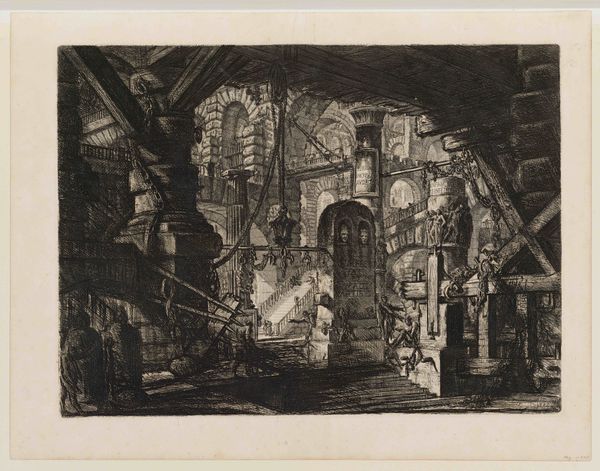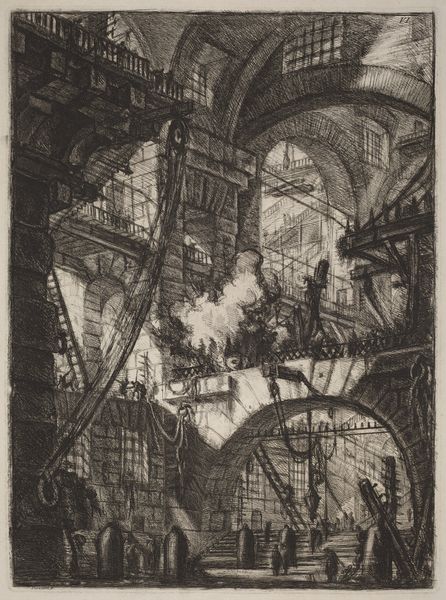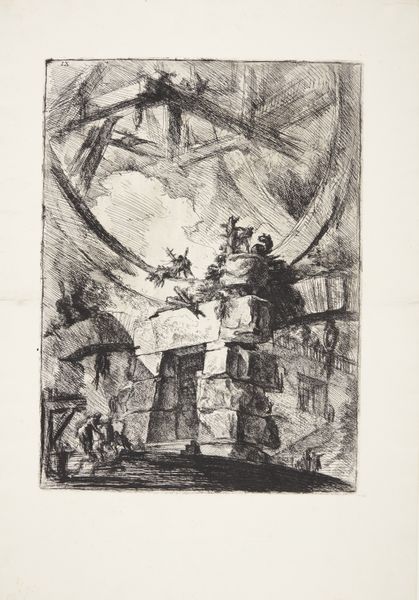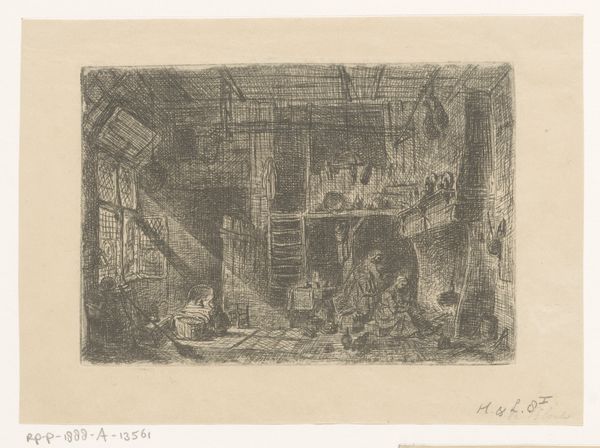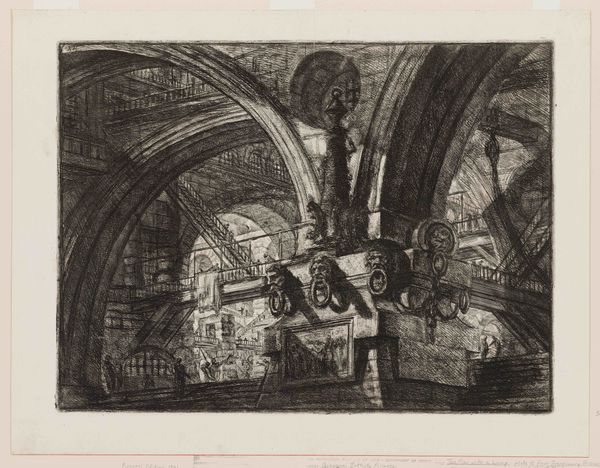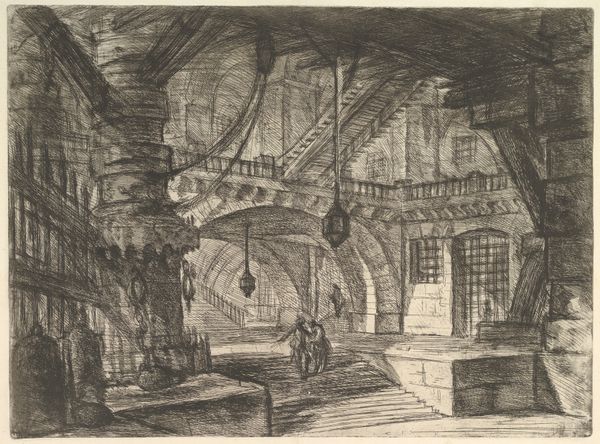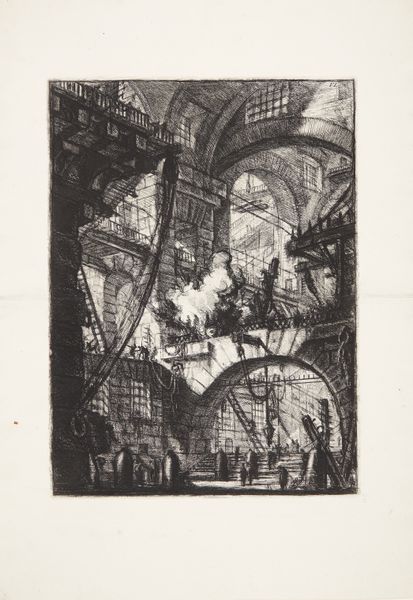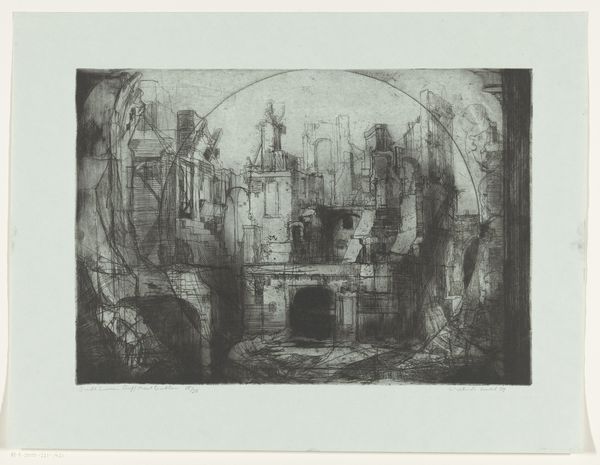
Dimensions: 16 1/4 x 21 1/2 in. (41.28 x 54.61 cm) (plate)
Copyright: Public Domain
Curator: Giovanni Battista Piranesi’s etching, “Prisoners on a Projecting Platform,” created around 1761, is currently housed here at the Minneapolis Institute of Art. Editor: It’s instantly oppressive, isn’t it? The stark contrast, the labyrinthine architecture... It evokes a powerful sense of claustrophobia, like a nightmare rendered in precise detail. Curator: Absolutely. Piranesi was a master of manipulating perspective and scale to create these disorienting spaces. We're looking at an imaginary prison interior. Remember, this print emerges from a historical context where discussions around incarceration and penal reform were gaining traction in Europe. Editor: It's interesting to consider what “prison” symbolized then versus now. The exaggerated architectural forms – the dizzying array of stairs and platforms – almost dwarf the human figures, reducing them to insignificance within this vast, dehumanizing system. Are those figures chained to the platform on the left? Curator: Likely so. Piranesi employed such dramatic visual language, heavily inspired by Baroque sensibilities. Notice the stark light and shadow contrasts, employed here not merely for artistic effect but as a commentary on power and confinement. The light is directed in from above, but is the illumination natural, or artificial? Editor: It amplifies the emotional impact. It's difficult to be certain if the lighting source is artificial or from some opening. It's nightmarish and surreal, it reminds me of the architectural sets in *The Cabinet of Doctor Caligari*, evoking an off-kilter atmosphere of psychological unrest. I wonder how viewers at the time responded to this image? Were they more aware of similar themes and imageries related to social reform, or was this just another history painting of no real concern? Curator: This print isn't necessarily history *painting*. Though Baroque in appearance, such works straddled social critique and theatrical fantasy. Consider its potential impact on conversations about justice, power, and the spaces we create. Such prints became popular collector's items for progressive thinkers in the late 18th century. Editor: Well, progressive or not, its disturbing imagery makes it undeniably potent. Curator: Indeed. This image lingers in the mind, prompting us to consider the psychological and physical dimensions of imprisonment – themes as relevant today as they were centuries ago.
Comments
minneapolisinstituteofart almost 2 years ago
⋮
This demonic scene combines the horror of prisoners suffering in brutal surroundings with a symphony of rhythms consisting of curves and angles, darkness and light.
Join the conversation
Join millions of artists and users on Artera today and experience the ultimate creative platform.
